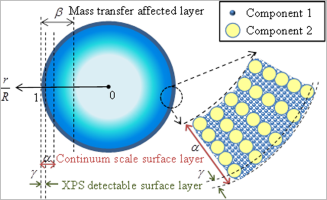Multiscale modeling for surface composition of spray-dried two-component powders
Jie Xiao1,* (肖杰) and Xiao Dong Chen1,2,*(陈晓东)
1School of Chemical and Environmental Engineering, College of Chemistry, Chemical Engineering and Materials Science, Soochow University, Suzhou, Jiangsu Province, P.R. China
2Dept. of Chemical and Biochemical Engineering, College of Chemistry and Chemical Engineering, Xiamen University, Xiamen, P.R. China
AIChE J. 2014, 60, 2416–2427.
Spray drying is a primary process for manufacturing various powder products. One of the most important properties of powders is the ability to get wet. Surface chemical composition critically influences this property. Furthermore, surface composition also influences the efficiency of production as it affects the stickiness of the powder. This work is an attempt to analyze the surface compositions of spray-dried two-component powders produced under various conditions using an innovative multiscale modeling approach. A molecular-level geometrical interpretation is seamlessly coupled with a continuum diffusion model. The predictions are compared with the measurements done on the protein–lactose system using X-ray photoelectron spectroscopy. Sample calculations for the system have demonstrated that the new approach helps reveal surface formation mechanisms much better than that explained with the monoscale continuum approach. This work provides a good basis for a fruitful area of study toward surface composition-focused powder quality control that will have a positive impact in industries.

链接: //onlinelibrary.wiley.com/doi/10.1002/aic.14452/abstract